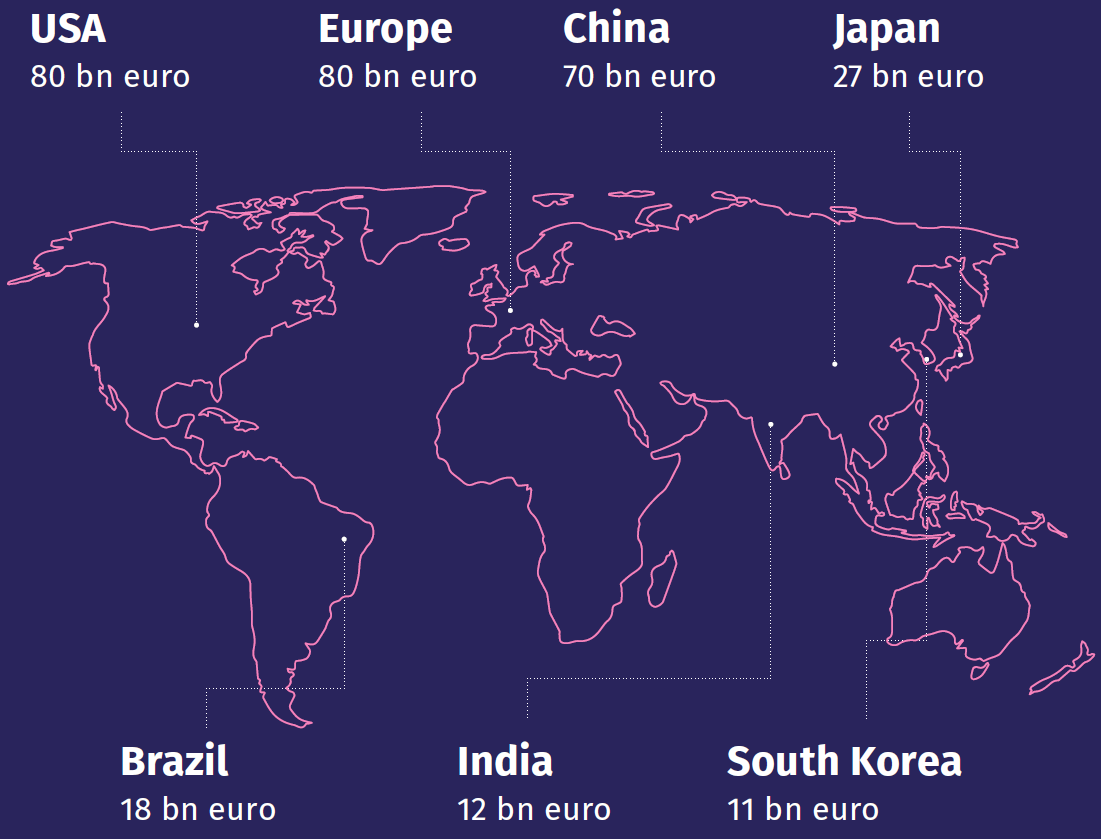An average morning beauty routine has 7 steps, meaning, using 7 different skin products. This is even before putting on make-up and all decorative cosmetics. In the evening, we are recommended to do the routine all over again or a variety of it at least.
It’s staggering how many beauty products have made their way into our daily lives and it has become a big business. But have you ever asked yourself what is it really that you are putting on your skin and who is responsible for regulating these products?

Picture source: unsplash.com
First.. let’s talk money
With all the morning and night-time beauty routines circulating the internet and our thirst for maintaining a youthful, glowing looking skin, it is no wonder the beauty industry has been adding a big bundle of money to the economy all over the world. Let’s have a look at the numbers:
The European beauty market is valued at an astonishing €76.7 billion at retail sales price and, as some of you may have guessed, this makes them the largest market for cosmetic products in the world! The United States comes second, with a value of €72.3 billion and China third, with a value of €61.6 billion [1].

Picture source: www.ctpa.org.uk
“The European beauty market is valued at an astonishing €76.7 bilion at retail sales price”
Now, when looking at this global industry that profits solely off of consumerism, it is important to question the safety of the products. Especially since we are putting them on our skin, the largest organ of our body. Have you ever realized, when visiting your local beauty care store, that we have whole aisles dedicated to one product! A whole aisle just for shampoo, whole one just for shower gels, and more and more and more. It sure seems that quantity wins over quality… and it shows.
Ingredients
Consider this, according to a 2004 study by the Environmental Working Group, women use approximately 12 beauty care products a day and men use approximately 6 [2]. Now, it is most likely even more.
Would anyone like to take a guess at how many harmful chemicals these products release into our skin? One study from the UK in 2009 discovered that an average woman’s beauty daily routine involves her applying 515 different chemicals on her body! [3].

Picture source: unsplash.com
Certainly, not all of these chemicals are dangerous. However, there are many which have been linked to cancer, endocrine system disruption, fertility problems, allergies and many other health issues (more you can find in this article).
The most concerning thing is that the majority of chemicals we are putting on our bodies have actually never been tested or assessed on their long-term effects on the human body [4]. Not to mention that products always contain a mix of chemicals which can again have even different effects on the human body, and this noone is testing.
Who is responsible?
The inconvenient truth lies behind the regulation of cosmetic products and their ingredients. Due to the fast growing demands for new, better produce, the EU put forth a regulation making the person or the company who is selling or distributing the beauty products responsible for the entirety of the manufacturing process. They themselves have to ensure that the marketed product is safe and that it correlates with the Cosmetics Regulation.
Products which are self-assessed to meet the regulation have an immediate access to the market and have the ability to circulate freely across the European Union [5]. The main legislation here is the Regulation (EC) No 1223/2009 on cosmetic products [6].
“The companies themselves have to ensure that the marketed product is safe”
Similar way of regulating is used in the USA, where the governing body is the U.S. Food and Drug Administration (FDA). Perhaps the biggest difference is that in the EU far more ingredients and substances have been banned from use in cosmetics. The EU law, in the latest update in 2019, bans 1,641 chemicals while the U.S. FDA has only banned or restricted 11 chemicals from cosmetics [7].
The cosmetics market in China has been growing so rapidly that their regulation was not able to keep up with the new developments. At last, the new Chinese cosmetic regulation, the Cosmetic Supervision and Administration Regulation (CSAR), entered into force on 1 January 2021 [8].
Sources
[1] https://www.ctpa.org.uk/eu-and-worldwide
[2] https://www.theguardian.com/us-news/2019/may/23/are-chemicals-in-beauty-products-making-us-ill
[3] https://www.reuters.com/article/us-britain-cosmetics-idUSTRE5AI3M820091119
[5] https://cosmeticseurope.eu/cosmetics-industry/understanding-cosmetics-regulation/
[6] https://ec.europa.eu/growth/sectors/cosmetics/legislation_en
[7] https://www.fda.gov/cosmetics/cosmetics-laws-regulations/prohibited-restricted-ingredients-cosmetics


0 Comments